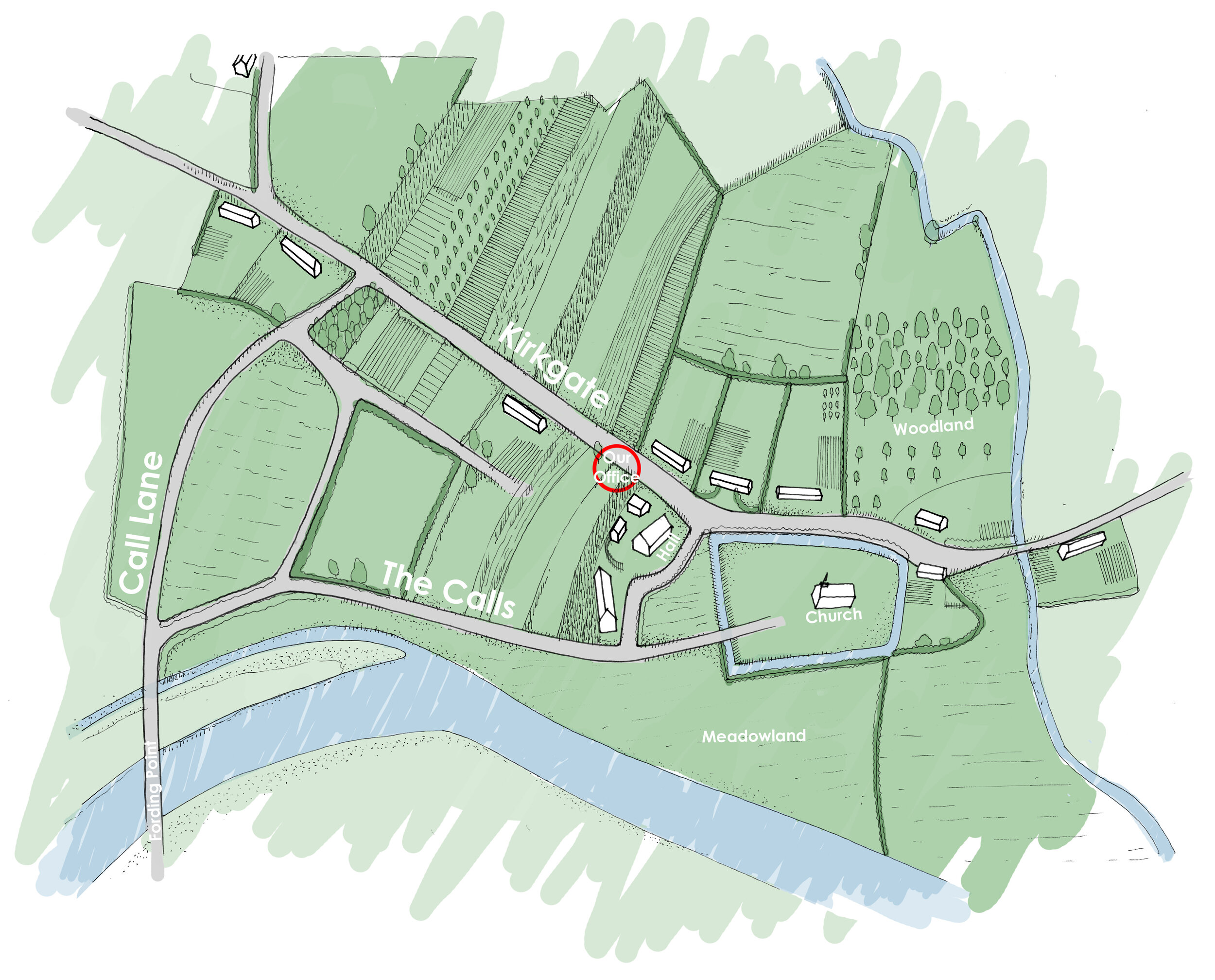Kirkgate: The oldest street in Leeds
Having been situated on the corner of Wharf Street and Kirkgate for the best part of 20 years, Kirkgate feels quite close to home for Den Architecture.
But did you know Kirkgate is the oldest street in Leeds?
Leeds in 1089 - A small collection of roads, houses and a church
At over 1,000 years old, Kirkgate has seen the growth of Leeds from a number of farm dwellings, to a thriving city with a population of over 800,000. Throughout the growth of Leeds in the last millennium from Loidis to Leedes, Kirkgate has been a central point in the commerce and industrialism of the city.
Kirkgate, also known as Church Road - 1086
Drawing of the Leeds Minster from Kirkgate in the 19th Century
View of Leeds Minster from Kirkgate
Two of the oldest roads in Leeds are Kirkgate and Briggate. Kirkgate means the road (gate) to the church (kirk) and Briggate is the road towards the bridge (brig). The church in question is now the Leeds Minster as we know it today, consecrated in 1841. There is evidence however that Kirkgate was the site of Christian worship for well over 1,000 years.
A survey in 1086 by William the Conqueror, states that Leeds had a church with a priest, a manor and a meadowland. As the village grew into a larger market town, the church was rebuilt, until in 1634 and 1727, two new churches were built.
Leeds’ Centre of Industrialism - 1711
Leeds’ prominence as a key city in the UK today is largely based on it’s huge success as an industrial city during the industrial revolution. Key to this was the construction of the First White Cloth Hall in 1711 - a cloth market that put Leeds on the map as one of the industrial powerhouses of the UK.
A covered market place for cotton, First Cloth Hall saw buyers flock from all over the north of England to Leeds in order to purchase Leeds’ fine fabrics. As the output of fabrics in Leeds continued to grow , the supply of cloth eventually outgrew the First Cloth Hall leaving the building redundant. The building later saw a number of uses, but has laid derelict since 1986. A huge restoration project is now underway that will see the First Cloth Hall returned to its former glory.
Commercial Kirkgate - 1917
A clog shop, a confectioners, a scale shop and a small ware dealers are just some of the shops that later inhabited Kirkgate during the early 20th century. The street became a key shopping destination within the city, and with no online shopping deliveries in sight, business was booming.
Photos show parked cars, and a tram-line carving its way up the street. Train times are posted on the wall under the bridge. At the beginning of commercialism in the UK, shops like Marks and Spencer were formed in the Kirkgate market.
The Future of Kirkgate - 2012
After almost a millennia of Kirkgate acting as one of the key spines of the city, years of neglect saw the ancient street of Kirkgate fall into disrepair. Stunning 18th Century shops and dwellings look tired and in need of repair.
Kirkgate in 2010
Kirkgate in 2019
Since 2012, Kirkgate has seen investment bring life back to the street once again. Excellent examples in regeneration such as Wapentake, Doghouse and Blue Collar have spearheaded the rebirth of Kirkgate, as more of the existing units are set to be renovated in the future.
The future looks bright for Kirkgate once again!
1931
2020
Credit to Leodis and ‘A History of Kirkgate from earliest time to 1800’ by Steven Burt & Kevin grady












